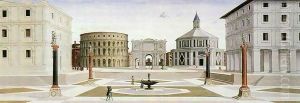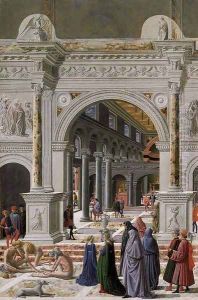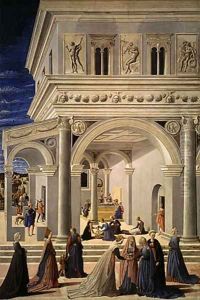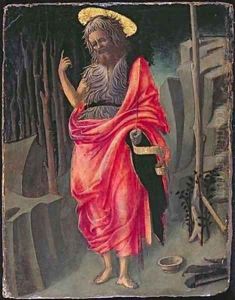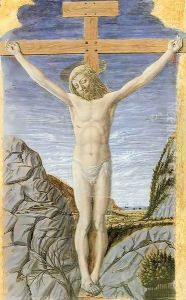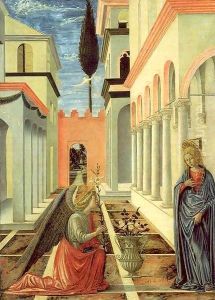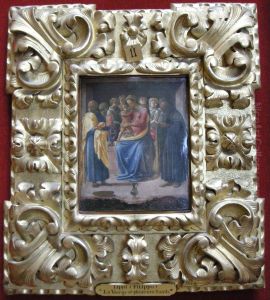Fra Carnevale Paintings
Fra Carnevale, born Bartolomeo di Giovanni Corradini, was an Italian painter active during the Renaissance period. His exact birth and death dates are not precisely known, but he is believed to have been born around 1420 and to have died around 1484. He hailed from Urbino, a significant cultural center in Italy during the Renaissance, which also produced notable figures such as the painter Raphael. Fra Carnevale's early life is shrouded in mystery, but it is documented that he entered the Dominican Order, which influenced both his name and his artistic output.
Fra Carnevale's artistic career is marked by a blend of Gothic and Renaissance elements. He was known to have been influenced by the works of Piero della Francesca and Fra Angelico, integrating mathematical perspective and attention to human anatomy with a spiritual and narrative depth that reveals his monastic background. His works often depicted religious themes, common for the period, with a particular talent for architectural details, which suggests he might have also been involved in architectural design.
One of his most noted works is the 'Barberini Panels,' consisting of two panels: 'The Ideal City' and 'The Birth of the Virgin.' These works showcase his skill in perspective and his ability to create a harmonious and idealized urban landscape, which was a significant interest during the Renaissance as artists and architects explored the principles of creating the perfect city. Despite the limited number of works attributed to him with certainty, these pieces are celebrated for their detailed representation and insight into Renaissance ideals of beauty, order, and spirituality.
Fra Carnevale's contributions to art were not limited to painting; he is also believed to have had a significant impact on the development of architecture in Urbino. Although documentation is scarce, his understanding of perspective and space likely influenced contemporary architectural projects. His legacy is that of an artist who bridged the medieval and Renaissance worlds, integrating the spiritual depth of Gothic art with the emerging techniques and humanist ideals of the Renaissance. Today, his works are studied for their technical skill and their reflection of the transformative period in which he lived.
